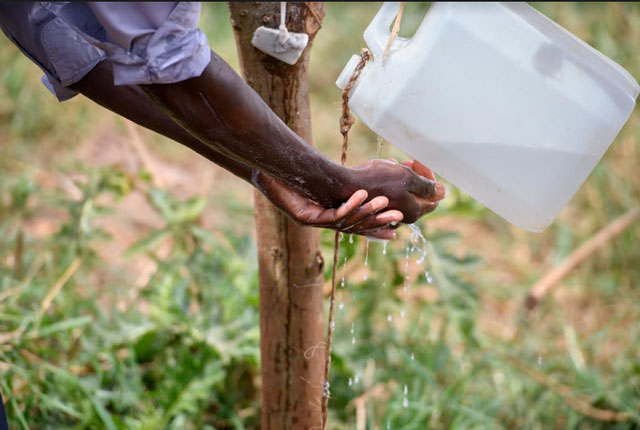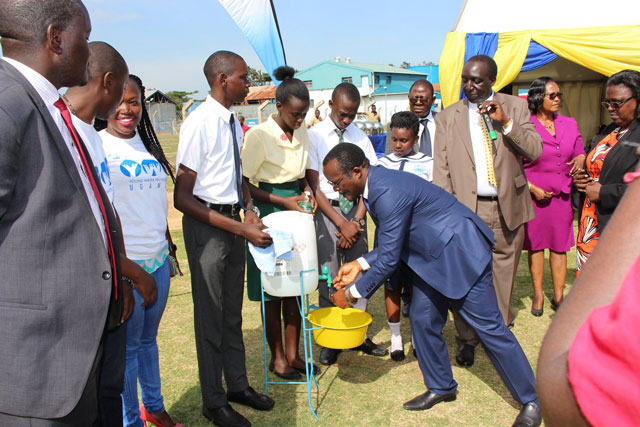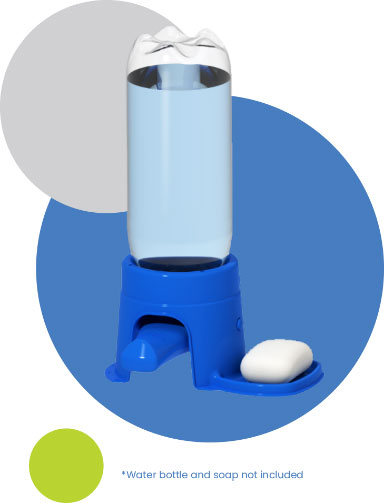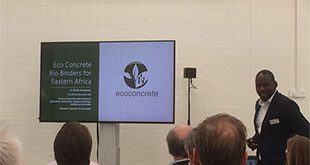
We need to seize the ‘handwashing with soap’ moment
COMMENT | Dennis Alioni | Uganda’s handwashing rate shot up to an unprecedented 86% in the last three months, surpassing the country’s 2020 National Development Plan II target of 50% and the 2019 average of 36%.
Prior to the COVID-19 pandemic, handwashing practice was minimal; registering a 22% increase over a 13-year period (from 14% in 2007 to 36% in 2019). At the moment, there is increased awareness and belief that handwashing with soap is critical to minimise disease spread. But experience tells us that new behaviour patterns that emerge in response to health outbreaks or particular events have a short life span. Practice dissipates as soon as the threat has been abated.
Faced with the COVID-19 threat, President Yoweri Museveni urged the country to embrace handwashing practice as one of the key measures to reduce the spread of the virus. In response, people installed and used handwashing facilities while local governments supported by non-governmental organisations and private sector donation accelerated the installation of handwashing stations with soap and water in public places.
Commuter taxis made it mandatory for all passengers to wash their hands with soap and water before boarding. Within the WASH sector, diverse types of innovative handwashing facilities were developed, tested and produced, including touch-free mechanisms and different types of disability-appropriate facilities. Information campaigns spread handwashing with soap messages at a scale and pace like never seen before.
To the credit of all, the country has not officially registered any COVID-19-related death. We have also witnessed that with concerted action, political will and leadership, and adequate resources – immediate behaviour change is achievable.

But strategies to trigger behaviour change – in this case, the need to wash hands with soap before food preparation when this was hardly or never practised – are very different from the strategies needed to maintain new behaviour once adopted. Persuasive advertising or friends might influence you to visit a coffee shop. However, there are many factors that will determine your continued trips for coffee at that particular shop. The former leads to immediate results. It is driven by an ‘experience of changing’ motives/practice such as behaviour enjoyment. The latter focusses on behaviour maintenance and ‘sustaining gratification.’
Each requires different sets of interventions and sufficient human and financial resources; all of which must be tailored to contextual or social realities.
The sector’s experience with tippy tap technology
In the not-so-recent past, many handwashing promotional activities did not put enough emphasis on customer preference. The development of different types of handwashing facility options was also not as important compared to the strong focus on ‘affordability’ of facilities. This resulted in the proliferation of tippy taps as a ‘go-to’ solution.
The simple components of a tippy tap – a three or five litre jerrycan, sticks and strings – made the design an inexpensive handwashing alternative. But, going by low household uptake and adoption, tippy taps were far from being the preferred choice. The few households that did adopt tippy taps were motivated by the intense promotion/push of these types of interventions.
Seizing the ‘handwashing with soap’ moment
Amid this ‘COVID-19 cloud’ however, the emergence of numerous handwashing facility innovations coupled with a newly formed belief that handwashing with soap or using sanitisers is critical in minimising corona virus spread bring great promise. As a sector, it is crucial that we seize the moment and build on this ‘silver lining.’
The 2020 Handwashing Compendium has documented the design of over 25 handwashing facility options for household and multiple use (including public places) across the globe. The uptake of a number of these options has escalated since the pandemic. This wide variety offers exciting possibilities for sanitation professionals and users alike. The 2015 SNV consumer insight study in Uganda found that households are willing and able to invest in sanitation products, provided they are assured that their investment will lead to concrete life improvements and experience.

Beyond the promotion of new handwashing facilities, access to and availability of soap and water are key determinants that facilitate handwashing with soap. These must be explored and where possible, addressed simultaneously. In the case of Uganda, although the presence of soap in households is 95%, this soap is not always used for handwashing. Results of SNV’s Sustainable Sanitation and Hygiene for All (SSH4A) Results Programme found that although households’ knowledge about handwashing with soap and presence of handwashing facilities increased by over 20 percentage points, the presence of soap in these facilities declined to 23.3%in 2019 (from a 2017 baseline of 6.5%). More initiatives are needed to ensure that soap is readily available at handwashing facilities outside the toilet.
Location of handwashing facilities is also important. Handwashing rates tend to be higher when facilities are accessible and conveniently located. This could be directly next to or near the toilet entrance, or, at the very least, 5 metres away from a toilet (applicable to rural areas). Lixil, a global enterprise that makes water and housing products, recently launched the SATO Tap as part of its SATO toilet products. The SATO Tap is fitted with a bottle of water and an elbow operated lever to release water. It is portable and can be mounted with ease on a sink, bucket, basin or wall; inside or next to a toilet.
Finally, as development experts, we have much to learn in developing our competence in marketing. We need to be able to ‘tell the story’ of our products more convincingly, in ways that talk to the needs and interests of customers. Take for example the success of the ‘Easy Latrine’ in Cambodia, an affordable option designed to satisfy the preference for expensive latrine designs. Within a year of its launch in 2009, access to improved sanitation increased by 7.7% in Cambodia. A similar strategy may be replicated for handwashing with soap as well.
******
Dennis Alioni is a Water, Sanitation and Hygiene (WASH) Advisor, SNV Uganda
 The Independent Uganda: You get the Truth we Pay the Price
The Independent Uganda: You get the Truth we Pay the Price



